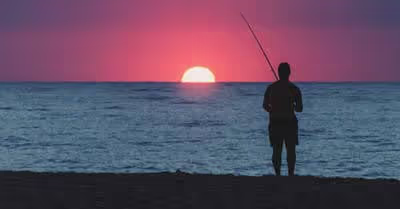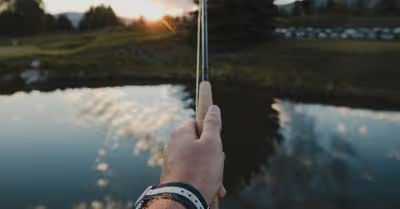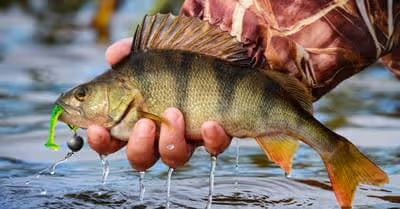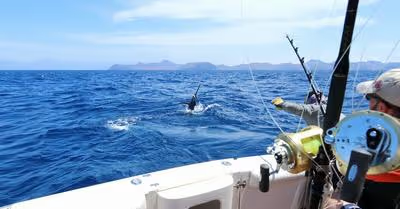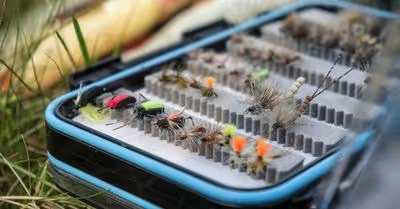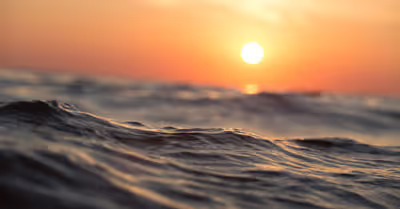Table of Contents
What They Are
The bluegill (Lepomis macrochirus) is a small freshwater fish that's native to North America. It's usually found in ponds, lakes, rivers, and reservoirs and is one of the easiest fish to catch. The bluegill is commonly known as bream, brim, perch, and copper nose or sunny in most areas. This fish can be found either in shallow or deep waters and can hide around and inside the dock, old tree stumps, or other underwater structures. You can also find them sheltering in aquatic plants but this may depend on the time of the day or season.
How to Identify Them
In addition to the signature blue patch on their gills, bluegills can be identified by the length of their pectoral fins. The fins normally extend beyond its eyes when folded towards the mouth. They also have orange or bright yellow bellies but this can vary depending on their habitat. So don't be surprised if you come across bluegill with distinctive colorings such as deep blue and purple. They are omnivores with very small mouths and will feed on anything that can fit in their mouth.
Size and Weight
Although they usually measure 6 inches, bluegills can reach 12 inches and can weigh about 4.5 pounds. The biggest ever recorded bluegill weighed 4 pounds and 12 ounces and was caught in 1950.
How Long Do They Live?
The growth of the bluegill is so fast in the first three years but can be slow once it reaches maturity. It typically lives for 5 to 8 years but in some rare cases, can live for up to 11 years.
What Regions Can You Find Them?
The bluegill is native to North America and can be found in various regions in the United States such as east of the Rocky Mountains from the coasts of Virginia and Florida to the west of Texas and northern Mexico, western New York, and western and northern Minnesota.
While they're predominant in these areas, you can find them in virtually every pond, river, lake or water body near you.
Habitat Info
As we've noted, you can find bluegills in ponds, creeks, streams, rivers, lakes, or any water body across the country. They love quiet water bodies and prefer shallow waters with vegetation, fallen limbs, logs, and underwater structures. You can also find them around weed beds when searching for food and looking for areas to spawn.
The adults commonly move in deep, open water during summer where they easily suspend below the water surface to feed on various aquatic creatures. Bluegills prefer warm waters ranging between 60 and 80�F, though you'll find them about 320 square feet in the water during non-spawning months. Although they enjoy some heat, they dislike direct sunlight and will go deeper into the water when the sun is up and hot. This means that they will stay near the water surface in the morning to stay warm before retrieving deeper in the water when the sun becomes hotter.
Seasonal Habits
Needless to say, the key to catching bluegills is to know where you can find them all year long. For this reason, here's a breakdown of bluegills' seasonal habits.
Spring
Spring is, without a doubt, bluegill time. They return to the shallows to receive more oxygen as the snow melts. You can check the shallows or deeper points and flats. This is because they'll move to the shallow to get oxygen and warm before returning into deeper waters as the sun gets hotter.
You can also look for areas with weed growth during early spring as these areas warm faster due to direct sunlight. In essence, the best time to fish for bluegills is in early spring, just after a few days of stable warm and sunny weather.
Spring is also spawning time for bluegills and this means that they'll be biting quite a lot. They are also very vulnerable during spawning as they'll lay on their nests right under your nose, so you can easily catch them by just dangling a worm, a small jig, or leech right in front of them.
Summer
Female bluegills will often leave the nests in early summer after spawning and will be hiding in weeds and lily pads not far from their nests. They'll bite quite a lot to recuperate the energy lost during spawning and this is another great time to catch some bluegill.
They'll most feed in shallow waters in the morning and late in the evening when the water is warm but will move deeper into the water at noon or in the afternoon when the sun is hot. You can look at river backwaters, slack-water areas inside channels, or in little inflowing feeder streams, as well as below fallen trees and stumps in the water.
Fall
Fall is also a great time to go bluegill fishing. They'll be willing to bite and can be found in deep weed edges. You can also find them in the deepest holes in the water.
Winter
While fishing for bluegills isn't a bad idea, they won't bite as much as they tend to become more lethargic. This means that they'll retrieve back to the deeper pockets of water and you'll have to find them if you want to catch some bluegills.
What Do They Eat?
Bluegills are not picky eaters and will eat just about anything including worms, smaller fish, leeches, zooplankton, crickets, grasshoppers, small frogs, maggots, and insects. This means that you have a plethora of options when it comes to what goes to the hook. In addition to small crankbaits, fake worms, and spinners, you can use bread, corn, processed baits or other table scraps to lure bluegills.
You should, however, keep in mind that bluegills bite all year round but their feeding habits may be influenced by various factors such as the weather, time of day, and season.
Where to Catch Them
Bluegills are easy to catch if you know where to find them. You can find them in many aquatic weeds, behind logs, around stumps, and in underwater structures. You can also check both shallow water surfaces and deep waters but this may depend on the time of the day and season.
Fishing Methods to Use
One of the best things about bluegill fishing is that you can use a variety of techniques and they'll all be effective. The most important thing is to choose a fishing technique that gives you confidence. You should also enjoy using the technique.
Bottom Fishing - You can cast your bait and let it sink slowly to the bottom. The weight should be as light as possible so that the bluegill doesn't feel the weight when they bite. Bluegill is likely to bite as the lure sinks. This technique is effective when looking to catch bluegills in deep waters.
Bobber Fishing - This method is great, especially in spring and summer when bluegills tend to bite in shallow waters. It can also be a superb technique for kids. You should, however, remember that bluegills never chase their food, so your lure should be slow or motionless to work effectively.
Drift Fishing - Bluegills can be found in schools of about 20, which essentially makes drift fishing an effective technique.
Fly Fishing - This is an exciting way to catch bluegill using small insects, which are irresistible to bluegills.
Lure Tackle and Baits
When it comes to tackle selection, the best way to go is to use lighter tackle. The bluegill has a small mouth and will generally feed on tiny, aquatic invertebrates. For this reason, your rod, reel, and the line should be ultra-light. Line weights ranging between 2 and 6-pound tests can be effective.
Keep the Baits and Lures Small
As we've noted, bluegills have small mouths so the baits and hooks should be small. Hook sizes ranging from size 6 to size 10 can work best. The hook should have longshanks to make it easy for you to remove the hook from bluegill's smallmouth. While live baits work best, you can use various artificial lures and baits as long as they're tiny in size.
Are Bluegill Good to Eat?
Besides being pretty and fun to catch, bluegills are very delicious and taste much better than most fish. Here's a great recipe to start you off.
Bottom Line
The bluegill is one of the most popular fish in the United States. They bite all year round and are easy to catch. This makes them great if you want to have some good fun out there on the water. Follow the above-described facts and you'll increase your chances of catching bluegills.
Recent Articles



